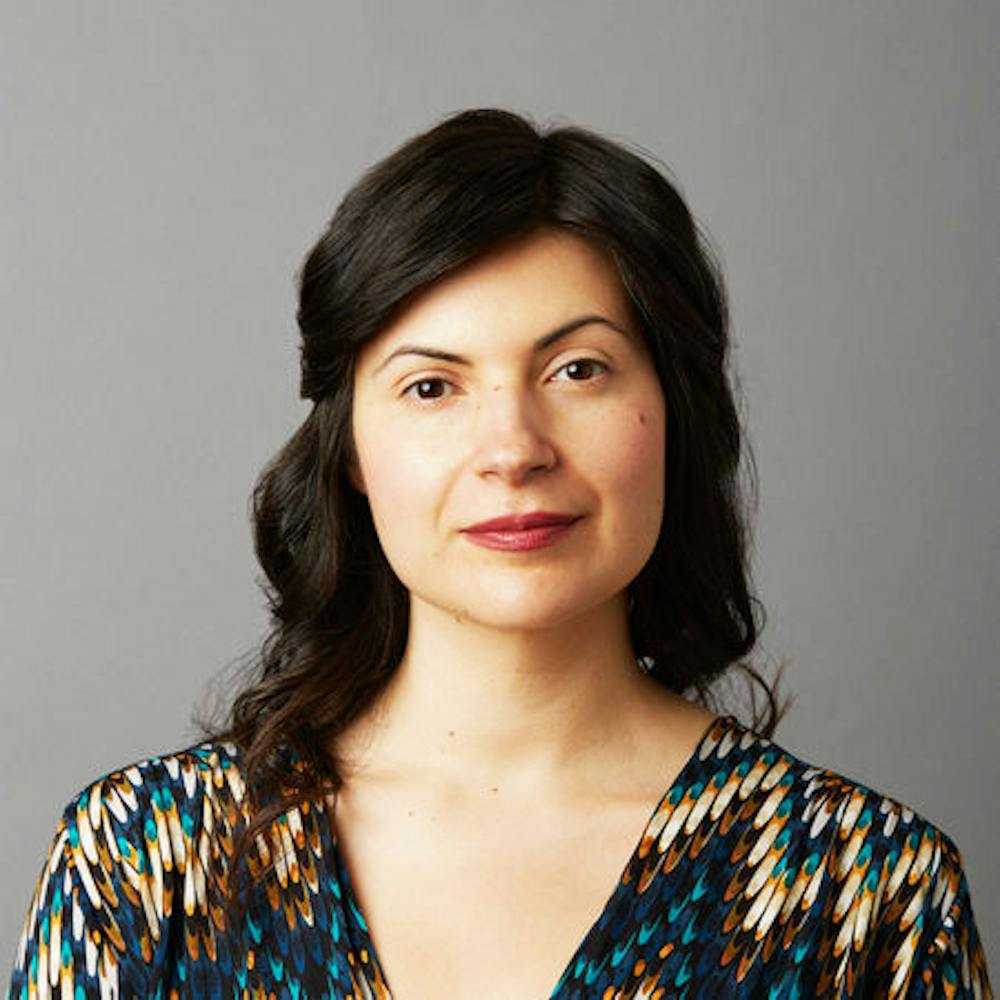Anorexia, bulimia, binge eating: These are topics Americans have a hard time discussing; these words evade conversation. But the reality is that people suffer from these disorders, particularly within American culture. The media puts such a strong emphasis on the body that one’s entire essence of selfhood can feel defined by a number on a scale. Core values often fall by the wayside when measuring oneself against others. Mona Awad MFA’14 offers an authentic perception of body image in her latest book “13 Ways of Looking at a Fat Girl.” Her bold narrative of body-obsessed culture follows protagonist Elizabeth through her high school years into her early thirties as she battles with her weight and self-acceptance.
Awad’s candor is refreshingly real. She does not pretend body image becomes easier to grasp with age and maturity. She provides those haunting thoughts that creep into the mind and refuse to back down from commanding the consciousness. Every vulnerability, every sin emerges to the surface rapidly and refuses to budge. Elizabeth’s struggle to conform to unrealistic body image standards causes her immense pain, harm and resentment. She cannot hold a peaceful, healthy relationship because she does not value herself enough to foster these relationships with others. Elizabeth is ultimately alone in her battle to conquer her weight, constantly grasping to reach an undefined goal.
Her loneliness provides further fuel for self-loathing and pushes her body to extremes. At her lowest points, Elizabeth is either gorging herself on fatty, greasy foods or starving herself for days on end while over-exercising with intense treadmill and cycling workouts. In this way, Awad’s “13 Ways of Looking at a Fat Girl” enlivens the vicious cycle of some body image struggles: the transition from fat to thin to fat.
The reader understands that there is no concrete definition of happiness for Elizabeth. People often think a lower number on the scale correlates with a sunnier disposition and a brighter life, but irreversibly, this only creates more anxiety and a phobia of becoming fat once pounds have been shed. One misstep, and everything is lost.
Throughout the entirety of the book, Elizabeth fears losing all semblance of control, and it is this fear that ultimately drives away those closest to her. Awad understands what it means to grow up in a culture more interested in a number than a quality.
But the book also documents the genuine, up-and-down human experience of a young female teenager maturing into a middle-aged woman. Elizabeth has moments of brilliance, moments of beauty and fleeting encounters of unambiguous and endearing connection. From the first pages, the complex character sees through others’ deceit and corrupt behavior. Her rebellious and sometimes unorthodox personality rounds her out as a relatable teenager working to figure out where she stands in the world. As she grows older, she does not lose her authenticity, nor does she grow out of her hamartia. She climbs into adulthood with the notion of long-term change and goal-setting. Elizabeth begins to figure life out in the sense that romance is no longer an abstract term, and stability becomes more pronounced in her daily routine.
Awad sagely leaves the novel with one message: No one can escape the deeply personal. Every struggle that goes bone-deep will always be a struggle. No matter how much one person changes, there is no amount of outrunning or suppression that will magically fix the matters one most wants to ignore. Awad writes of embracing every idiosyncracy and every flaw. She urges the reader to remember that the compilation of one’s existence is not just a number on a scale. Rather, it is the intangibles and the invisible, indescribable sentiments that make up the self and add up to one’s self-worth.





